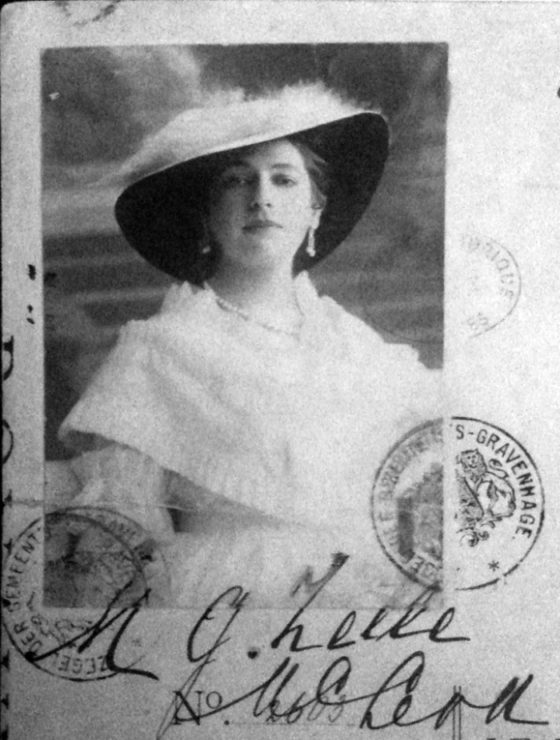
While history’s most illustrious commanders have long since shaken off this mortal coil, a surprising number of their horses are still with us to this day… at least in body. Check out this bizarre collection of taxidermied steeds that belonged to legendary military leaders from centuries past.

#8 Bonaparte’s Best Beast – The Musee d’Armee in Paris is home to Le Vizir, a purebred Arabian that belonged to Napoleon. A gift from the Ottoman ruler Sultan Mahmud II in 1808, the pedigreed steed accompanied the deposed emperor into exile on St. Helena after the Battle of Waterloo. Following Bonaparte’s death in 1821, Le Vizir returned to France where he lived for another eight years. Once deceased, the horse’s body was preserved and put on display in the French capital. Interestingly enough, Napoleon’s more famous mount, Marengo, is also a museum piece. That horse, which carried the French conqueror through the battles of Austerlitz, Jena–Auerstedt, as well as the disastrous 1812 war in Russia, was eventually captured by the British after the Hundred Days Campaign. Marengo became the property of an officer of the Grenadier Guards and was later put out to stud. He died in 1831 after siring not a single offspring. His skeleton was preserved and is now exhibited at the National Army Museum in London.


#10 Civil War Horse – Ironically, Thomas “Stonewall” Jackson’s beloved charger Little Sorrel was actually a Yankee animal. Born in Somers, Connecticut ten years prior to the Civil War, the horse was captured by Confederate troops at Harper’s Ferry in 1861. Jackson acquired the animal shortly thereafter and named it Fancy, later Little Sorrel. Part of the Morgan breed, the animal carried his famous master through the battles of Bull Run, Antietam and Fredericksburg, having sustained no fewer than eight battle wounds in the process. Little Sorrel’s days as a warhorse ended with Stonewall’s death at the Battle of Chancellorsville in May of 1863. Jackson’s widow, unable to care for the horse, donated the beast to the Virginia Military Institute who in turn passed him along to a Richmond veterans’ hospital. The new owners took Little Sorrel on a national tour. In fact, the animal became something of a national celebrity, attracting throngs of admirers at each stop. Adoring fans often tried to clip locks of hair from Little Sorrel’s mane and tail. He died in 1886 after a stable fall. Following a military funeral, Little Sorrel’s hide was removed, mounted and put on display at the VMI in Lexington, Virginia where it remains. The horse’s bones, which were removed after death, were also preserved. The reassembled skeleton was transferred to the Carnegie Institute in Pittsburgh in 1903. In 1949, the bones were buried at the VMI in 1997. The only other preserved horse from the Civil War is Union general Philip Sheridan’s trusty mount Rienzi. The legendary cavalry commander eventually renamed the horse Winchester after his famous victory during the 1864 Shenandoah Campaign. The animal was immortalized in Thomas Read’s famous poem entitled “Sheridan’s Ride”. Winchester died in 1878 and was stuffed for exhibit at a New York City museum. After a fire gutted the building in 1922, the horse was donated to the Smithsonian Institute, which showcases the remains at its National Museum of American History in Washington, D.C.

#12 Little Big Horse
When reinforcements arrived at the scene of Custer’s Last Stand, the only thing still standing was a single horse. The injured animal, which had sustained seven gunshot wounds during the battle, belonged to a 7th Cavalry officer named Myles Keough. Its name was Comanche. Although often heralded as the U.S. Army’s “last survivor of the Battle of Little Bighorn”, in reality it’s estimated that more than 100 beasts lived through the slaughter and were either taken by Sioux or Cheyennewarriors or fled into the Montana plains. Comanche, although nursed back to health by the men of Fort Abraham Lincoln in the Dakota Territory, was retired from active duty. He was however retained as a company mascot and made honorary second-in-command of the 7th Cavalry. Upon his death in 1890, Comanche was given a full military funeral. His body was preserved and went on exhibit at the 1893 Chicago World’s Fair. The animal’s remains later became a permanent part of the University of Kansas’ Natural History Museum where he is exhibited still.

BONUS: Other Mounts
Forgive us for flogging a dead horse, so to speak, but we had to add a couple of more stuffed steeds to this list.
• During the 1632 Battle of Lützen, Swedish king Gustav Adolphus was fatally shot while charging across the field atop of his trusty stallion Streiff. The fatally wounded animal was sent home with his dead master and later mounted and put on display at the Swedish Royal Armouries in Stockholm where is can be still be seen.
• Lisette, a horse belonging to Peter the Great, once saved the Russian ruler from certain death during the Great Northern War. At the Battle of Poltava in 1709, the horse reflexively jinked just as a Swedish musketeer was taking aim at the 37-year old monarch. The shot, which supposedly would have lodged in Peter’s body, hit the saddle instead. In gratitude, the Tsar pampered the horse for the remainder of its days and later immortalized the animal by having the carcass stuffed. The remains of Lisette are viewable in the Zoological Museum in St. Petersburg along with two of Peter’s favourite pooches.
SOURCES
http://www.smithsonianmag.com/history/union-colonel-phil-sheridans-valiant-horse-124899830/?page=3
http://www.civilwar.si.edu/cavalry_winchester.html
http://horseandman.com/horse-stories/stonewall-jacksons-horse-little-sorrel/07/07/2011/
http://www.ravishingbeasts.com/horses/2008/1/21/napoleans-horse-le-vizir.html
http://www.nam.ac.uk/microsites/war-horse/explore/horse-heroes/marengo/
http://www.atlasobscura.com/places/comanche-survivor-battle-little-bighorn
http://edition.cnn.com/2013/04/29/sport/taxidermy-horses-phar-lap-comanche-trigger/index.html
http://noonobservation.com/2012/11/09/stuffed-horses-and-the-men-who-loved-them/
http://www.washingtontimes.com/news/2006/apr/7/20060407-090610-9730r/?page=all









